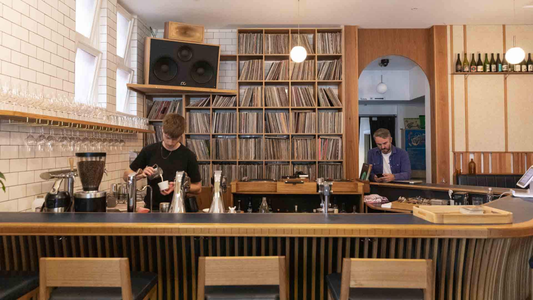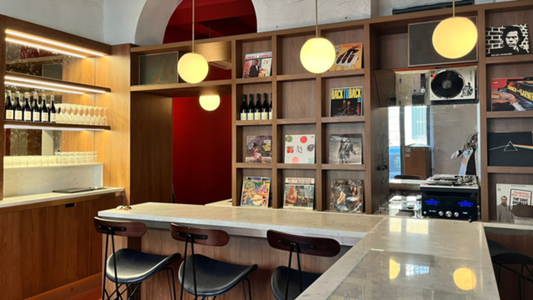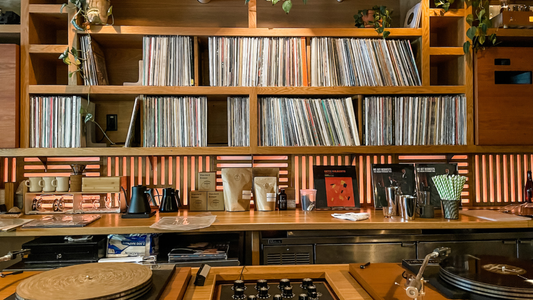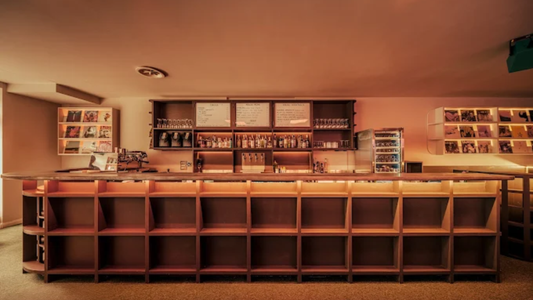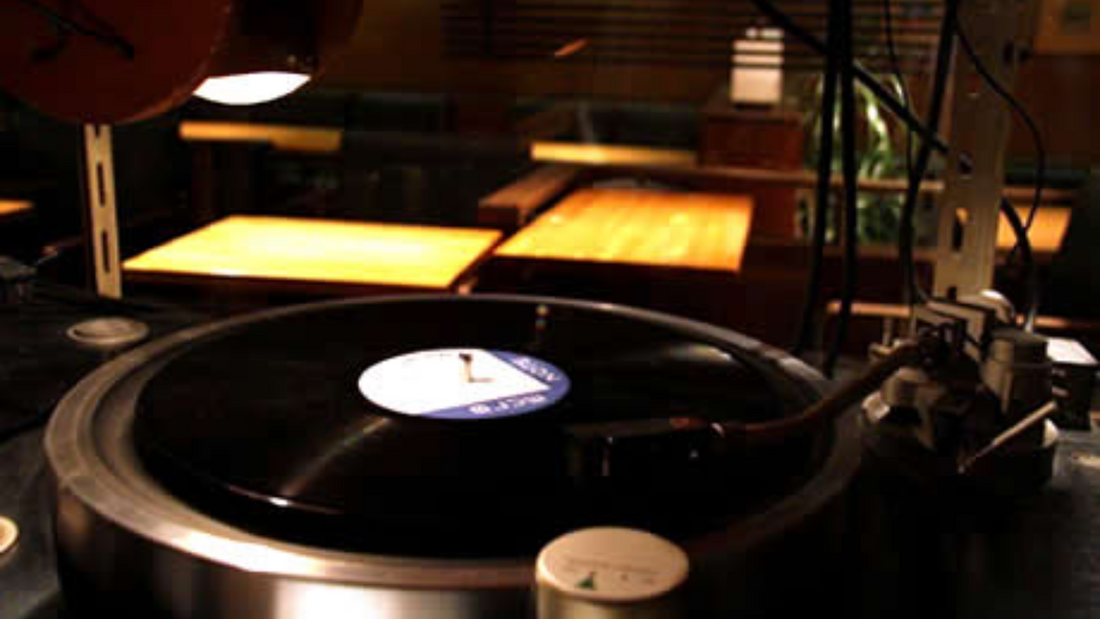
Learning to listen again: From iPods to listening bars
By Rafi Mercer
Listening is not passive. It’s a skill. One we hone, one we can lose, and one we can recover if we care enough to try.
There was a time when listening meant presence. Sitting in front of a turntable, sleeve in hand, waiting for the stylus to drop. You listened to the record, not as background, but as the evening’s main event. The pauses between tracks, the imperfections in the pressing, the way one side flowed into the next — all of it mattered. The ritual taught you to focus, to notice, to let the sound shape the room.
Then came the digital turn. The iPod first, then the iPhone, then Spotify and its endless scroll of songs. Music became portable, abundant, instantly accessible. But something was lost in that abundance. We became trained to hear less. To skip, to shuffle, to treat sound as wallpaper to other tasks. We filled silence with playlists, but we rarely stopped to inhabit the music itself. Quantity replaced quality. Convenience replaced care.
I don’t say this to be nostalgic — every format brings gains as well as losses. Digital gave us access, discovery, connection. But it also trained us to listen differently: quickly, distractedly, with one ear always elsewhere. Listening became consumption. And when that happens, you forget that there is always more to hear, if only you give it time.
That’s why the listening bar feels so radical. Not because it is new, but because it reminds us of something we forgot: listening is an art. In Japan, they never lost this idea. The jazz kissas and listening cafés of Tokyo and Osaka kept the flame alive through decades when much of the world rushed headlong into convenience. There, listening remained slow, intentional, reverent. The room, the system, the record — all tuned to remind you that music deserves attention.
Perhaps now, the rest of the world is waking up to its ears again. Across London, Berlin, New York, listening bars are appearing not as novelties, but as sanctuaries. Spaces where silence is valued, where sound is sculpted, where the act of listening feels like a shared ritual. The rise of vinyl sales, the hunger for live experiences, the care with which younger audiences approach sound — all point to the same shift. We are rediscovering that quality matters. That presence matters. That music is more than content; it is experience.
Listening, when treated as a skill, changes everything. You begin to notice texture, depth, silence. You hear the space between instruments, the breath behind a vocal, the decay of a cymbal fading into nothing. You hear the room itself — the way walls and air shape sound. And in noticing, you begin to listen differently to the world: to voices, to spaces, to the rhythm of life around you.
Maybe that’s the real gift of the listening bar movement. Not just the chance to hear better systems, better records, better rooms — but the reminder that we can all re-train our ears. That listening isn’t something you do absent-mindedly, but something you practice. And the more you practice, the more the world opens up.
So yes, perhaps we lost the skill of listening in the years of infinite playlists and earbuds on commutes. But the story doesn’t end there. The resurgence of listening culture shows that we are capable of remembering. That our ears can wake again. That the world, noisy as it is, still holds spaces where silence frames sound, and sound frames silence.
Listening is not just a skill. It is a way of being present. And it is one we are learning again, together.
Rafi Mercer writes about the spaces where music matters. For more stories from Tracks & Tales, subscribe, or click here to read more.
